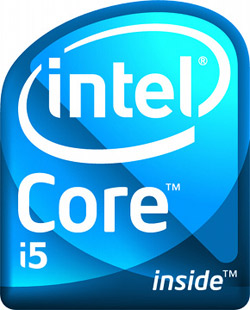
In the past couple
years Northbridge chipsets for the Intel platform have included the 945P, 965P, 975X, P35,
P45 and so on. Common to each generation was a discrete silicon
chip, and of course, each time some aspect of the technology advanced
an new generation of chipset and motherboard emerged. This is partly because
it's good business to make existing technologies obsolete, and because a Northbridge chipset acts as
bridge between the CPU, system memory, graphics card and the rest of the
PC.
The third member of
the family (the first being the CPU) is called the Southbridge. It's
job is to bridge the CPU-Northbridge with the rest of the computer; input/output devices like
the hard drive, PCI/PCI Express expansion slots, sound card, network controller and even
mouse/keyboard.
On
the Intel platform these have included the ICH7, ICH8, ICH9 and ICH10 Southbridge
chipsets.
Here's a block diagram to illustrate the relationship between these three
critical chips in a simplified computer system, the way it has been and the way
it will shortly become with the Intel P55 platform. The main difference between
the two is that tasks previously handed by the Northbridge chipset have been
rolled into the Core i5 processor.
So once again, everything you know about computers is
about to be stood on its head.
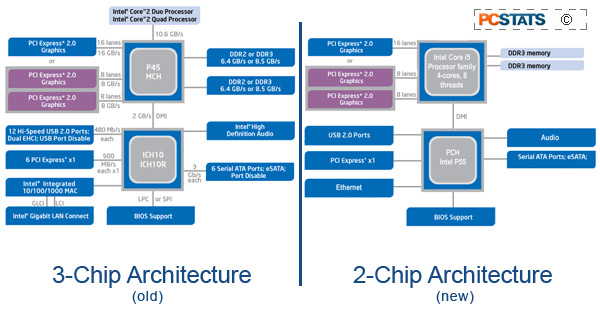
The P55 Express chipset integrates both the memory
controller and 16 PCI Express 2.0 on to the die of the "Lynnfield" CPU. The P55
Express Platform Controller Hub will also have up to eight of its own PCI
Express lanes. The changes to the PCI Express graphics sub-system won't have a
huge impact on end-users, most P55 motherboards will still have two or three PCI
Express slots that can be run in (x16/x4) or (x8/x8/x4) mode, the only
difference is that now the first two slots will be handled directly by the CPU,
which will have the nice side effect of removing some system latency.
Although the P55 Express chipset is no longer handling
memory itself, it's still important to note that memory compatibility on
socket-1156 "Lynnfield"-compatible motherboards will be DDR3-exclusive, and run
in dual-channel mode. Expect supported memory speeds to run from DDR3-800 up to
DDR3-1333, with overclocking support going all the way up to DDR3-2000+. Since
the P55 Express Northbridge doesn't have many jobs left to do, it actually
doesn't need a very fast link to the processor. Instead of equipping the P55
chipset with a complex and expensive-to-produce QPI link, Intel has instead used
a slower 2.0GB/s DMI link for the Intel P55 Platform Controller Hub to
communicate with the processor. Both northbridge and southbridge have been
merged into what Intel is now calling the P55 Platform Controller Hub. The storage and media interface capabilities are pretty similar to that of
Intel's well-known ICH10R southbridge, with support for 14 USB 2.0 ports, six
SATA 3Gb/s ports with support for RAID 0/1/5 and 10 modes, and gigabit Ethernet.
Gigabyte Smart 6
Gigabyte has unveiled a suite of software and
hardware technologies which are making their debut with its P55 motherboards.
For quite some time, Gigabyte has placed two Basic Input
Output System (BIOS) chips on its motherboards. The secondary BIOS chip works as
a physical backup should the primary BIOS chip fail. With Smart DualBIOS, Gigabyte has
doubled the memory size from 8MB up to 16MB, and the extra memory
means that these BIOS chips can now do some new tricks.
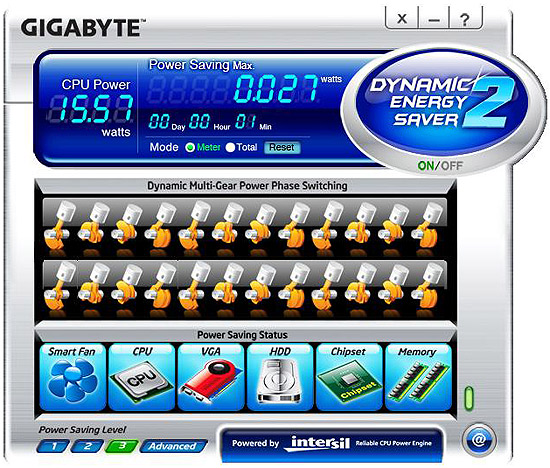
Smart DualBios can save critical data such as passwords
into memory, or even work as a scheduler for important dates and events.
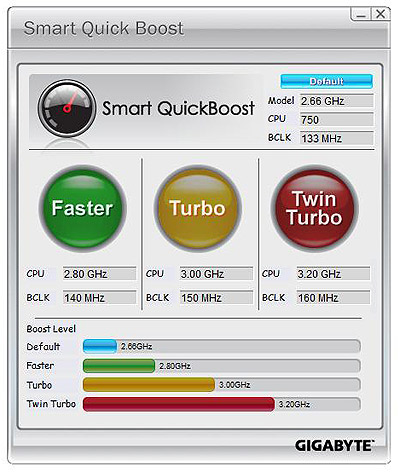
Smart QuickBoost is a built-in system tuning feature can
adjust CPU speed on the fly, for dynamic processor overclocking inside of
windows. Smart QuickBoost has three levels of overclocking that will adjust
processor speeds up to 400MHz (3x133MHz) above the CPU's stock speed. This
feature works well when paired with Smart QuickBoot, which has two modes. The
first bypasses BIOS hardware checks that can take a few seconds during start-up,
while the second enables a hybrid S3 (suspend) and S4 (hibernate) state, which
allows the system to store its last used state, which allows the system to power
on and resume exactly where it left off last time.
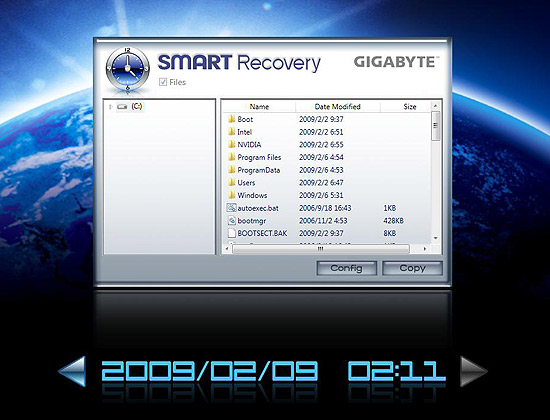
Gigabyte's Smart Recovery utility allows for system
backup by creating snapshots of the hard drive periodically, so it's possible to
restore deleted or altered files and settings from several different dates in
the past. Smart Recorder is a system logging tool will monitor when your
computer has been turned on or off, as well as keeping a log of when large
amounts of data are transferred between hard drives.
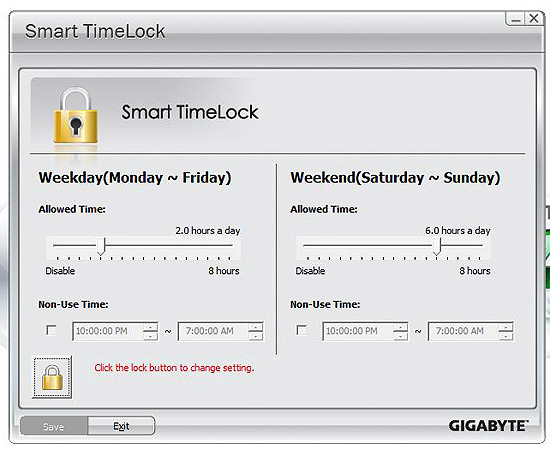
Finally, Scheduling using Gigabyte's Smart
Timelock feature can lock down the system during set hours on certain days of
the week, for both system security purposes and parental control.
